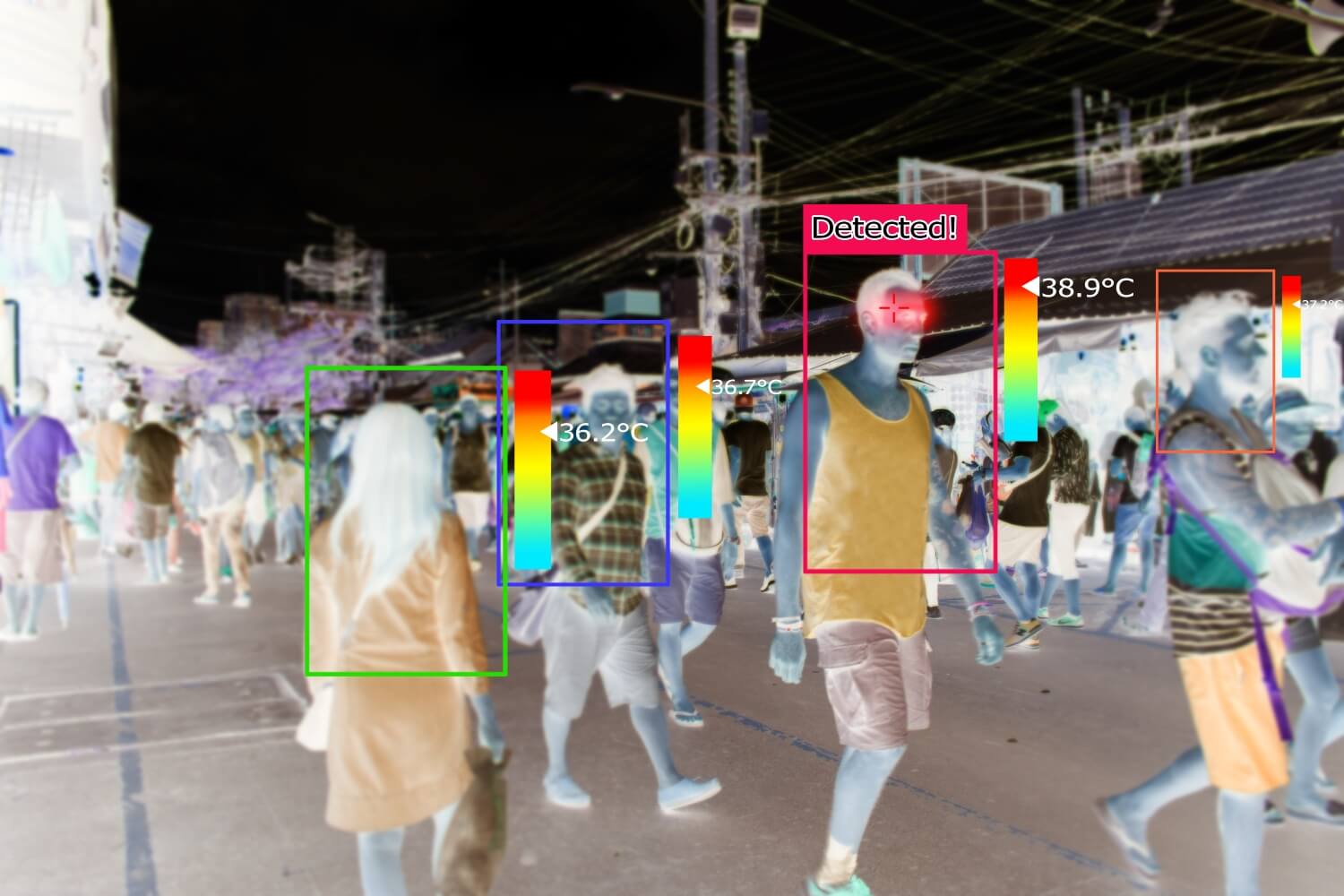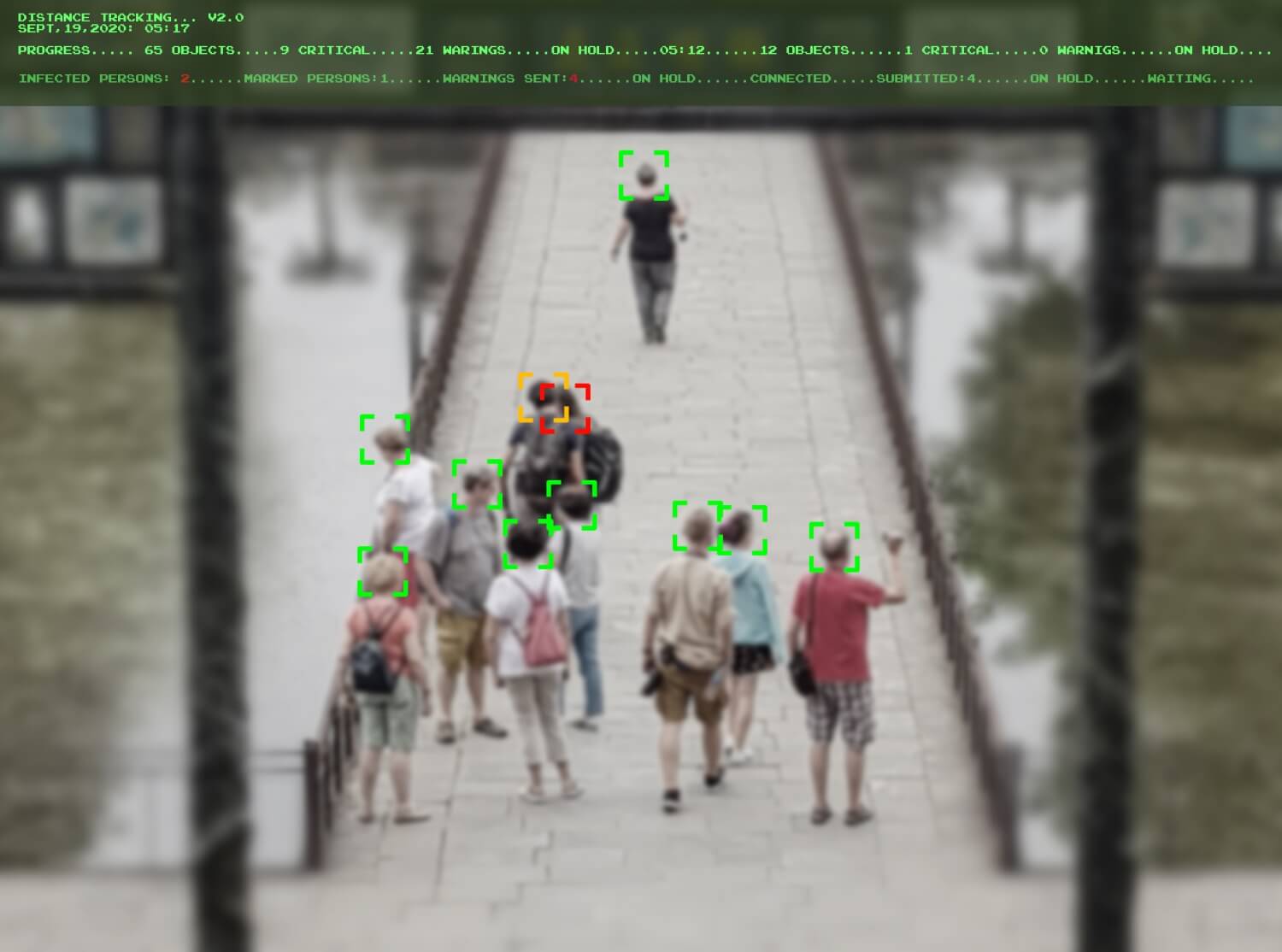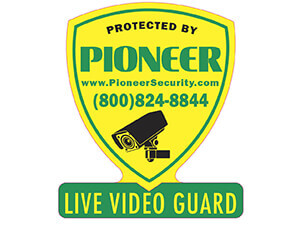Thermal imaging integrated with live remote surveillance solutions is revolutionizing how businesses protect their most critical assets. By detecting heat signatures instead of relying on visible light, thermal technology enables 24/7 monitoring, regardless of lighting or weather conditions, whether it’s complete darkness, fog, or smoke.
When combined with live remote video feeds, this powerful tool provides unparalleled real-time situational awareness, enabling security teams to respond quickly and effectively to potential threats, regardless of their location or concealment.
For industries requiring constant vigilance, partnering with Pioneer Security’s advanced remote monitoring services ensures these capabilities become practical, actionable security outcomes.
What Is Live Remote Surveillance?
Understanding the foundation of live remote surveillance is essential to grasping how thermal imaging enhances security operations.
Live remote surveillance refers to security systems where video feeds are monitored off-site by trained professionals or AI-driven platforms. Unlike traditional on-premise security cameras that require physical presence, remote surveillance allows for centralised management of multiple sites through a secure connection.
The Basics of Remote Video Monitoring
At its core, live remote video monitoring involves transmitting real-time security feeds to remote monitoring stations or a security operations centre (SOC). This setup enables continuous observation of critical environments without the need for on-site guards. Through video analytics, operators can promptly detect motion alerts and incidents, reducing response times and improving overall safety.
How Real-Time Monitoring Transforms Security
With real-time video monitoring systems, any suspicious activity triggers instant alerts, enabling virtual patrol agents or security teams to assess and intervene remotely.
This virtual guard capability supplements physical security, making surveillance more efficient and cost-effective. Operators can conduct virtual patrols, review live security feeds, and coordinate responses, thereby enhancing protection beyond the capabilities of traditional static cameras.
Understanding Thermal Imaging Technology
Thermal imaging relies on detecting infrared radiation emitted by objects, allowing cameras to “see” heat differences invisible to the naked eye.
How Thermal Cameras Detect Heat
Thermal cameras are equipped with specialised sensors that pick up infrared radiation, which all objects emit as heat. These sensors translate temperature gradients into detailed images, showcasing thermal contrast between warmer and cooler surfaces. Accurate sensor calibration ensures reliable temperature mapping for effective surveillance and monitoring.
Why Thermal Imaging Works Without Light
Unlike conventional cameras, thermal imaging does not depend on visible light, making it invaluable for nighttime or low-light conditions. Thermal wavelengths penetrate smoke, fog, and darkness, offering ambient heat detection that traditional optics cannot. This capability ensures uninterrupted surveillance regardless of environmental challenges.
Key Benefits of Thermal Imaging in Security
Thermal imaging offers distinct advantages that make it a game-changer for security professionals.
Visibility in Complete Darkness
Thermal cameras provide clear detection capabilities even in zero-visibility environments. This 24/7 performance ensures that critical sites remain continuously monitored, without blind spots caused by night or adverse weather conditions.
Detecting Hidden Intruders
Thermal imaging excels in identifying unauthorised personnel hiding in shadows, behind foliage, or inside poorly lit areas. The heat-based detection helps reveal perimeter breaches before damage occurs, improving proactive security measures.
Minimising False Alarms
Traditional surveillance often struggles with false alarms triggered by shadows, changes in lighting, or small animals. Thermal technology’s reliance on heat signatures significantly reduces nuisance alerts by distinguishing real threats from environmental noise, ensuring more accurate incident detection.
How Thermal Imaging Improves Live Remote Surveillance
Integrating thermal imaging with live remote surveillance elevates security by delivering enhanced situational awareness and faster threat identification.
Early Threat Detection at a Distance
Thermal-enhanced monitoring enables security agents to spot potential threats early, often from greater distances than visible cameras allow. Thermal overlays, combined with live video streams, provide instant heat maps, enabling operators to quickly pinpoint the locations of intruders.
Integrating Thermal Feeds with AI
Modern surveillance systems leverage AI-driven video analytics to process thermal data in real-time. These systems can generate instant alerts based on abnormal heat patterns, track intruder profiles, and automatically flag anomalies, thereby improving response efficiency and reducing human error.
Use Cases: Where Thermal Remote Surveillance Excels
Thermal remote surveillance is widely adopted across high-risk industries where security cannot be compromised. Its unique ability to detect heat signatures regardless of lighting or weather conditions makes it ideal for continuous and effective monitoring in challenging environments.
1. High-Risk Industries Benefiting from Thermal Surveillance
Construction sites, energy plants, transportation hubs, and logistics yards frequently face theft, vandalism, or unauthorised access. Thermal imaging’s ability to continuously monitor large areas makes it ideal for these sectors, ensuring asset protection and operational continuity.
2. Thermal Surveillance in Construction Sites
Construction zones are vulnerable to theft of tools, machinery, and materials, especially during non-working hours. Thermal image detection cameras enable security teams to remotely monitor wide-open sites, detecting human presence even when intruders attempt to conceal themselves behind equipment or in poorly lit areas.
3. Energy Plants and Utility Facilities
Energy infrastructure, such as power plants and substations, requires stringent security controls. Thermal imaging supports perimeter security by detecting unauthorised personnel early and identifying heat anomalies that may indicate equipment malfunctions or sabotage.
4. Transportation and Logistics Hubs
Thermal cameras help secure airports, seaports, rail yards, and warehouses by detecting unauthorised access and suspicious activities in expansive areas. The technology enables real-time alerts even in low visibility, enhancing response capabilities.
5. Protecting Critical Assets and Infrastructure
Thermal cameras enable remote access control by monitoring sensitive areas, including substations, warehouses, and fenced perimeters. They detect heat signatures of potential intruders, alerting security teams instantly and preventing costly breaches or downtime.
6. Perimeter and Fence Line Security
Thermal imaging provides reliable perimeter monitoring by scanning fences and boundary lines for heat signatures. This enables rapid detection of intrusion attempts before a physical breach occurs.
7. Remote and Harsh Environment Surveillance
Thermal cameras maintain their performance in extreme conditions, such as deserts, snowy regions, or foggy areas, where visible light cameras may fail. Their rugged design and heat-based detection make them suitable for remote site monitoring with limited infrastructure.
AI & Thermal Imaging: A Smart Security Duo
Artificial intelligence greatly enhances the effectiveness of thermal surveillance by:
- Analysing thermal video feeds to detect objects and classify potential threats.
- Predicting behaviour patterns to anticipate security risks.
- Using innovative alert systems to reduce false positives through automated behaviour tracking.
- Detecting anomalies automatically to improve accuracy.
- Streamlining operator workflows with intelligent overlays.
- Sharpening overall security focus for faster and more effective responses.
Thermal vs Night Vision: Which Is Better for Surveillance?
When selecting the right technology for night-time security, understanding the differences between thermal imaging and traditional night vision is crucial to ensure optimal surveillance performance tailored to your environment and security needs.
Feature |
Thermal Imaging |
Night Vision |
| Detection Method | Detects heat signatures (infrared radiation) | Amplifies available visible or near-infrared light |
| Performance in Darkness | Effective in total darkness | Requires some ambient light, struggles in complete darkness |
| Weather Conditions | Works well through smoke, fog, and dust | Performance degrades significantly in fog, smoke, or dust |
| Image Type | Produces monochrome thermal images | Produces detailed, sometimes color or green-tinted images |
| Range | Superior long-range detection capabilities | Limited range, best for short to medium distances |
| Ideal Use Cases | All-weather, long-range, perimeter, and harsh environment surveillance | Low-light conditions with some ambient light, close-range monitoring |
Remote Locations & Infrastructure-Free Monitoring
Thermal surveillance thrives in remote or off-grid locations where traditional security systems are limited. Its ability to operate independently of standard power and network infrastructure makes it an ideal choice for isolated sites.
1. Deploying Thermal Surveillance in Remote Areas
Mobile surveillance trailers equipped with solar-powered thermal cameras and cellular video transmission enable secure monitoring in isolated job sites or rural settings. Rugged hardware and autonomous operation ensure durability and consistent connectivity, even in challenging environments.
2. Solar-Powered Thermal Cameras
Solar panels paired with battery storage provide continuous power for thermal cameras, eliminating the need for grid connections. This sustainable approach enables long-term deployments in remote locations with minimal maintenance requirements.
3. Cellular and Satellite Video Transmission
Using cellular networks or satellite communication enables real-time video feeds from remote cameras to be transmitted back to central monitoring stations. This technology overcomes the challenges of limited wired connectivity in off-grid sites.
4. Rugged and Weather-Resistant Hardware
Thermal surveillance equipment designed for harsh environments can withstand extreme temperatures, moisture, dust, and physical impacts, ensuring reliable operation in deserts, mountains, or industrial zones.
5. Autonomous Operation and Edge Processing
Many remote thermal systems incorporate onboard AI and edge computing to analyse video locally, sending only critical alerts to reduce bandwidth usage. This autonomy improves efficiency and reduces dependence on constant network availability.
Frequently Asked Questions
Can thermal imaging cameras work through fog, smoke, or dust?
Yes, thermal cameras detect heat radiation, which can penetrate smoke, fog, and dust more effectively than visible light cameras, thereby maintaining effective surveillance in challenging conditions.
How does Pioneer Security integrate thermal imaging with physical security guards?
Pioneer combines virtual patrols using thermal feeds with licensed guards who can be dispatched quickly if an incident requires physical intervention, creating a layered security approach.
Are thermal cameras effective during hot summer days when ambient temperatures are high?
Thermal cameras use contrast detection rather than absolute temperature; even in hot conditions, they identify differences in heat signatures, effectively detecting people or machinery against warmer backgrounds.
What type of maintenance do thermal cameras require for remote sites?
Thermal cameras typically require minimal maintenance but should be periodically checked for sensor calibration, lens cleanliness, and hardware integrity, especially in rugged environments.
How do thermal cameras handle privacy concerns compared to visible light cameras?
Thermal imaging captures heat signatures without revealing facial details or personal identifiers, thus offering a privacy-friendly surveillance option that better complies with privacy regulations.
Secure Your Environment with Pioneer Security’s Advanced Thermal Surveillance
Harness the power of thermal imaging integrated with live remote surveillance solutions to safeguard your critical assets with unmatched accuracy and real-time responsiveness. Pioneer Security’s expert team, advanced AI technology, and customised service plans ensure your security needs are met with precision and professionalism. Don’t leave your site vulnerable. Partner with Pioneer Security today to elevate your security strategy to the next level.
Visit Pioneer Security to learn more about our thermal imaging and remote surveillance solutions, designed to address the challenges of modern security.





